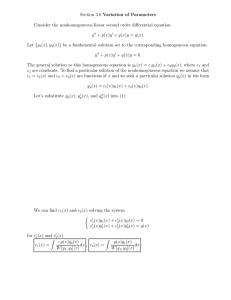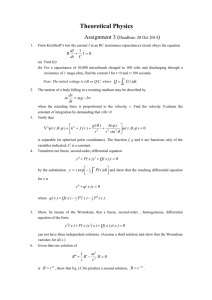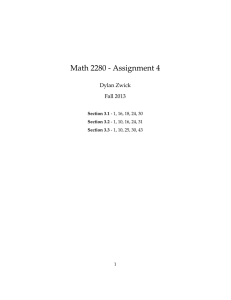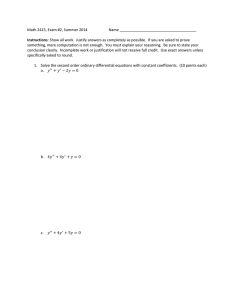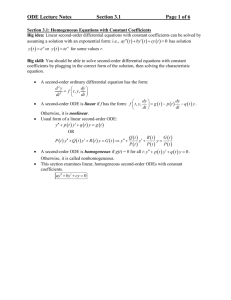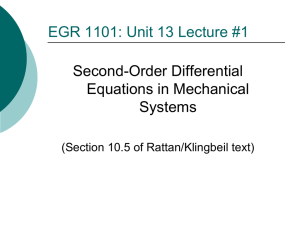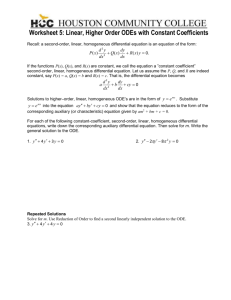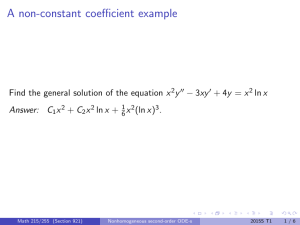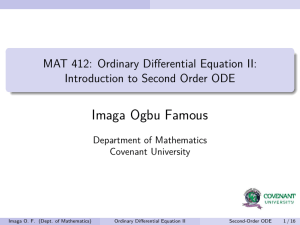Second-Order Linear Equations
advertisement
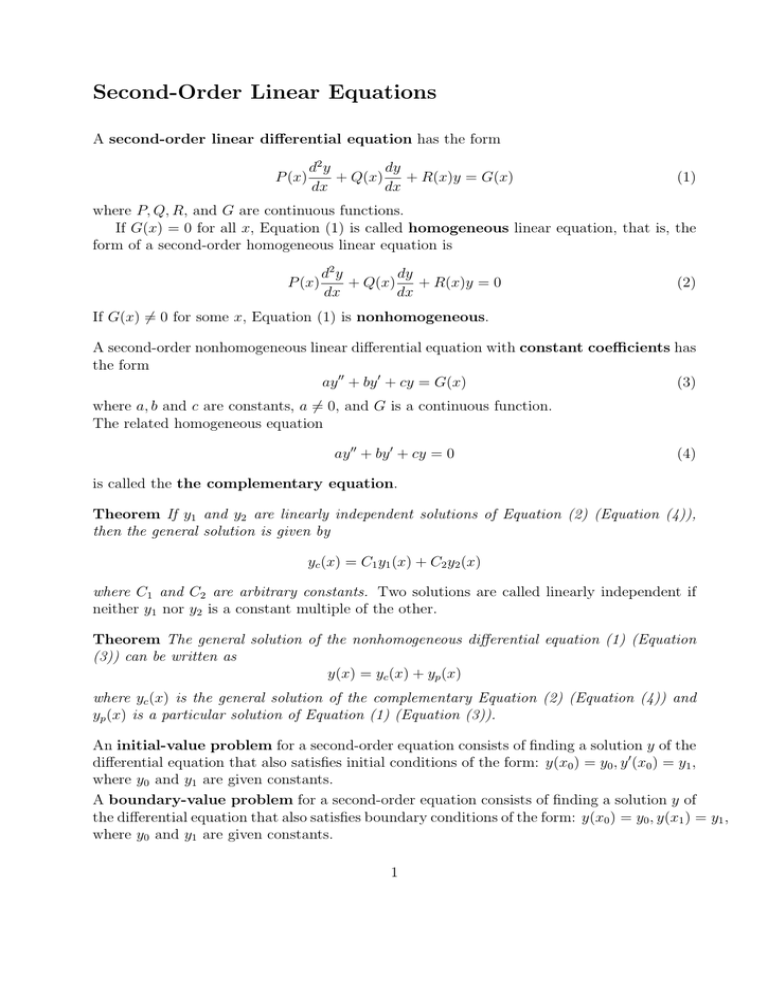
Second-Order Linear Equations A second-order linear differential equation has the form P (x) d2 y dy + Q(x) + R(x)y = G(x) dx dx (1) where P, Q, R, and G are continuous functions. If G(x) = 0 for all x, Equation (1) is called homogeneous linear equation, that is, the form of a second-order homogeneous linear equation is P (x) d2 y dy + Q(x) + R(x)y = 0 dx dx (2) If G(x) 6= 0 for some x, Equation (1) is nonhomogeneous. A second-order nonhomogeneous linear differential equation with constant coefficients has the form ay 00 + by 0 + cy = G(x) (3) where a, b and c are constants, a 6= 0, and G is a continuous function. The related homogeneous equation ay 00 + by 0 + cy = 0 (4) is called the the complementary equation. Theorem If y1 and y2 are linearly independent solutions of Equation (2) (Equation (4)), then the general solution is given by yc (x) = C1 y1 (x) + C2 y2 (x) where C1 and C2 are arbitrary constants. Two solutions are called linearly independent if neither y1 nor y2 is a constant multiple of the other. Theorem The general solution of the nonhomogeneous differential equation (1) (Equation (3)) can be written as y(x) = yc (x) + yp (x) where yc (x) is the general solution of the complementary Equation (2) (Equation (4)) and yp (x) is a particular solution of Equation (1) (Equation (3)). An initial-value problem for a second-order equation consists of finding a solution y of the differential equation that also satisfies initial conditions of the form: y(x0 ) = y0 , y 0 (x0 ) = y1 , where y0 and y1 are given constants. A boundary-value problem for a second-order equation consists of finding a solution y of the differential equation that also satisfies boundary conditions of the form: y(x0 ) = y0 , y(x1 ) = y1 , where y0 and y1 are given constants. 1 Solutions of ay 00 + by 0 + cy = 0 Roots of ar2 + br + c = 0 General solution r1 , r2 real and distinct yc (x) = C1 er1 x + C2 er2 x r1 = r2 = r yc (x) = C1 erx + C2 xerx r1 , r2 complex: α ± iβ yc (x) = eαx (C1 cos βx + C2 sin βx) Two methods to find a particular solution yp (x): • The Method of Undetermined Coefficients. • The Method of Variation of Parameters. Undetermined Coefficients G(x) = First try yp (x) = Cn xn + · · · + C1 x + C0 An x n + · · · + A1 x + A 0 Cekx Aekx C cos kx + D sin kx A cos kx + B sin kx Modification: If any term of yp (x) is a solution of the complimentary equation, multiply yp by x (or by x2 if necessary). Variation of Parameters We look for a particular solution of the nonhomogeneous equation ay 00 + by 0 + cy = G(x) of the form yp (x) = u1 (x)y1 (x) + u2 (x)y2 (x) where y1 (x) and y2 (x) are two linearly independent solutions of the complementary equation ay 00 + by 0 + cy = 0. The functions u1 (x) and u2 (x) are solutions of the following system of equations: ( u01 y1 + u02 y2 = 0 a (u01 y10 + u02 y20 ) = G(x) The method is called is variation of parameters because we have varied the parameters C1 and C2 to make them functions. 2
